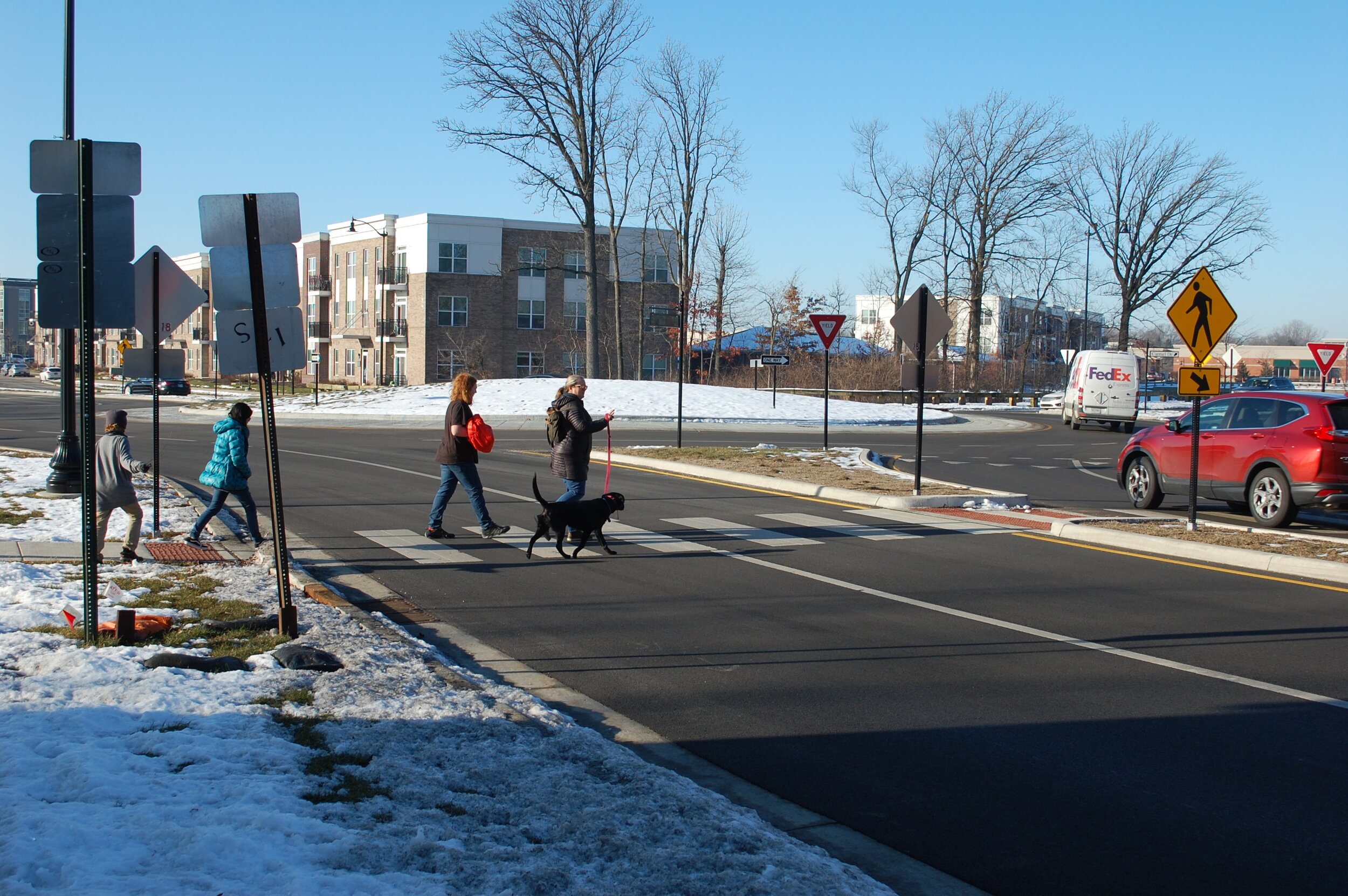Over the past several years, you’ve probably noticed a new sort of traffic pattern popping up on Northern Kentucky’s busiest roads. Roundabouts—circular junctions where traffic flows in one direction around a center island—have been incorporated into new street designs to make intersections safer for drivers and pedestrians alike. Here’s why they work.
Roundabouts help control speeding
In Northern Kentucky, 44% of all traffic deaths involve speeding. Roundabouts reduce traffic speeds because of the way they are designed. The tight circular turn radius requires motorists to slow to around 15 or 20 miles per hour when entering, circling and exiting the roundabout. It’s a natural and effective way to slow traffic speeds, which helps protect both motorists and pedestrians.
They actually prevent traffic jams
A common misconception about roundabouts is they stall the flow of traffic. In reality, they do just the opposite. While it’s true that roundabouts require motorists to temporarily reduce their speed as they yield to other cars and enter the circle, traffic is constantly moving. Unlike at traffic lights, where cars come to a complete stop, roundabouts eliminate the troublesome start-stop pattern of driving. In turn, this helps conserve energy, prevent fender benders and avoid the frustrations that come along with waiting for a light to turn green only to miss it again.
Fewer traffic lanes lead to fewer collisions
When busy intersections are controlled by traffic lights, the roads often require multiple lanes for each direction of traffic, which lengthens pedestrian crossings and increases the risk of collision. Roundabouts eliminate the need for traffic lights and can function properly with only one lane of traffic per entry and exit point. This means traffic passes through each intersection slowly and more controlled, and crosswalks are shorter and safer for pedestrians.
They’re designed with pedestrians in mind
Roundabouts require motorists to yield the right-of-way not only to other vehicles in the traffic circle, but also to people crossing on bike and on foot. There are several ways roundabouts can be designed to increase the safety of bicyclists and pedestrians. Dedicated bike lanes can be installed along the outer perimeter of the roundabout, so bicyclists can move with the flow of traffic. Sometimes, colored pavement is used to further delineate bike lanes from traffic lanes. In addition to installing standard yield signs and painted crossings, crosswalks can be raised slightly above street level to encourage motorists to slow down and remind them to yield. Thoughtful design fosters a safe, equitable environment for everyone using the roundabout.
Do you think the streets in your neighborhood could be safer?
Help us advocate for roundabouts to decrease traffic-related deaths and injuries and keep our communities safe.
If you live in Lakeside Park, Crestview Hills or Edgewood, you can take action now. The Kentucky Transportation Cabinet wants your feedback as they present roundabouts as an option for the Turkeyfoot Road redesign.



